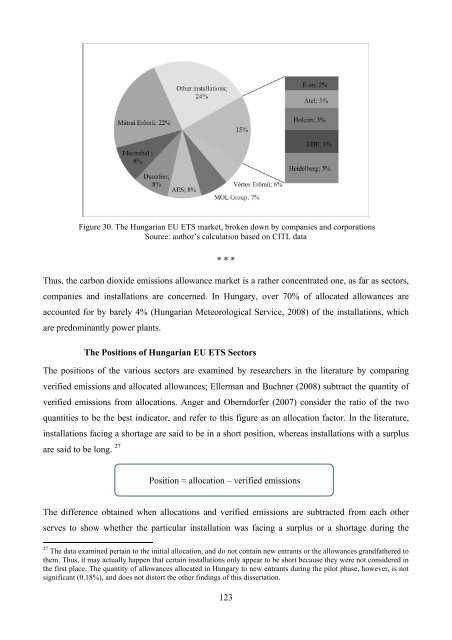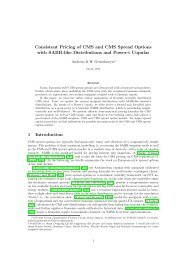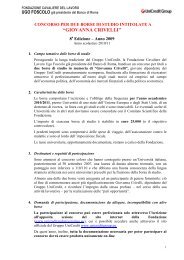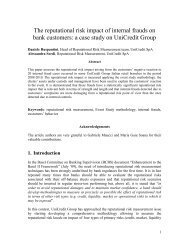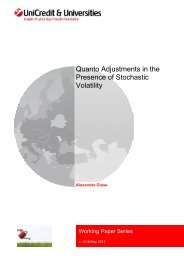Dóra Fazekas Carbon Market Implications for new EU - UniCredit ...
Dóra Fazekas Carbon Market Implications for new EU - UniCredit ...
Dóra Fazekas Carbon Market Implications for new EU - UniCredit ...
Create successful ePaper yourself
Turn your PDF publications into a flip-book with our unique Google optimized e-Paper software.
Figure 30. The Hungarian <strong>EU</strong> ETS market, broken down by companies and corporations<br />
Source: author’s calculation based on CITL data<br />
* * *<br />
Thus, the carbon dioxide emissions allowance market is a rather concentrated one, as far as sectors,<br />
companies and installations are concerned. In Hungary, over 70% of allocated allowances are<br />
accounted <strong>for</strong> by barely 4% (Hungarian Meteorological Service, 2008) of the installations, which<br />
are predominantly power plants.<br />
The Positions of Hungarian <strong>EU</strong> ETS Sectors<br />
The positions of the various sectors are examined by researchers in the literature by comparing<br />
verified emissions and allocated allowances; Ellerman and Buchner (2008) subtract the quantity of<br />
verified emissions from allocations. Anger and Oberndorfer (2007) consider the ratio of the two<br />
quantities to be the best indicator, and refer to this figure as an allocation factor. In the literature,<br />
installations facing a shortage are said to be in a short position, whereas installations with a surplus<br />
are said to be long. 27<br />
Position = allocation – verified emissions<br />
The difference obtained when allocations and verified emissions are subtracted from each other<br />
serves to show whether the particular installation was facing a surplus or a shortage during the<br />
27 The data examined pertain to the initial allocation, and do not contain <strong>new</strong> entrants or the allowances grandfathered to<br />
them. Thus, it may actually happen that certain installations only appear to be short because they were not considered in<br />
the first place. The quantity of allowances allocated in Hungary to <strong>new</strong> entrants during the pilot phase, however, is not<br />
significant (0.18%), and does not distort the other findings of this dissertation.<br />
123


